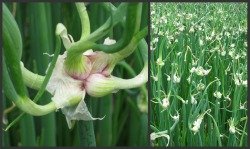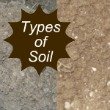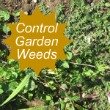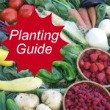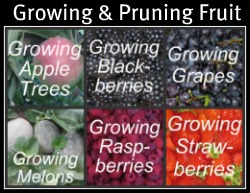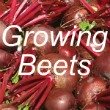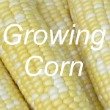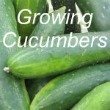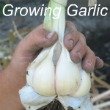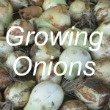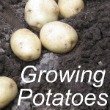|
Growing Winter Squash & PumpkinsWhen I was growing up, growing winter squash and pumpkins provided food for our family all winter. The rind of the squash was so hard; we had to use a saw to cut it open. Winter Squash was a staple for our family. Pumpkins are one of the many varieties of winter squash. During the summer, you’ll grow and eat your summer squash. You won’t eat your winter squash until it’s harvested in the fall. 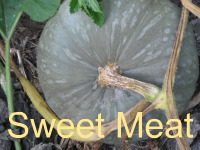
Planting Winter SquashThere are many varieties of winter squash. We like the sweet meat, butternut, and buttercup. We also plant pumpkin. It’s delicious. When to PlantWinter squash is a very tender vegetable. Plant them outside after the last frost-free date in your area. In zone 4 that’s the end of May. See
Vegetable Planting Guide. If you have a short growing season, you may need to extend your growing season by doing one of the following:
Back to Top Soil PreparationRototill organic matter, manure, and 16-16-16 inorganic fertilizer into the row before planting your winter squash. Add elemental sulfur to the soil if your soil is alkaline (Western States). See Types of Soil. Spacing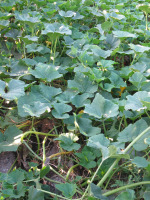
Growing winter squashes need a lot of space. They spread 15 - 25 feet in every direction. If you’re short on garden space, planting your winter squash next to the corn can give you a little extra room. The corn is well on its way before the squash and pumpkins start sending out their long vines. Because the corn is tall, the spreading vines won’t block the corn’s sunlight. The long vines can grow in between the rows of corn. Don't let the vines climb up the corn stalks. Traditionally people have planted their winter squash on hills (a small mound of dirt with 3-5 seeds per hill). I plant the squash in rows. Planting in rows makes it easier to water the squash with a drip line, and garden space is used more efficiently. Planting Seeds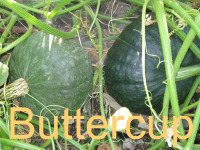
Plant your seeds ¾ -1" deep. If you sprinkle a little bit of manure on top of the planted seeds, it'll help keep the soil moist until the seeds germinate and establish a good root system. Plant the seeds down the row every 12 inches. This is a much closer planting than if you were planting your winter squash in hills. Water & WeedsA drip system or furrow irrigation system is the best way to water your growing winter squash. Because the squash plants have a lot of foliage to support, I recommend running a double drip line down the row. See
Garden Watering Systems. Keep the rows weeded early in the season, and don’t let the weeds hide under the foliage during the late summer or fall. See Garden Weeds. Squash Bugs and Cucumber BeetlesSquash is susceptible to squash bugs and cucumber beetles. Dusting the leaves with “Sevin” easily controls these chewing insects. The squash bugs are usually found near the base of the plant. You need to "keep a look out" for these bugs. If you don’t notice and eliminate them, they'll kill the plant. Your squash plant will look healthy one day and the next day it’s dead. Cross Pollination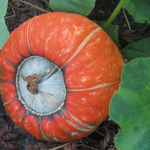
If you're planting several varieties of squash, they'll cross-pollinate. If you save seeds from one year to the next, you never know what you’ll come up with. The squash is still good to eat. It’s just a new variety. Seed to Seed teaches you how to save seeds and control the pollination of each type of garden vegetable. Harvesting Winter Squash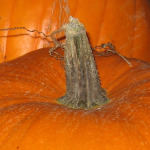
Winter squashes and pumpkins need to fully mature before you pick them. The texture, sweet flavor, and hard skin develop during the last few weeks of growth. If the growing winter squash doesn’t fully mature, the hard outer skin won’t develop, and the fresh squashes won’t last through the winter. After the first light frost, the vines will die. You can wait until the vines die before you pick the growing winter squash. Don’t just pull the squash off the vine. If the fruit doesn’t have a 2 inch stem, the squash tends to start rotting at the place where the stem connects to the squash fruit. You can cut the vine with some pruning clippers. A heavy frost will affect the storability of the winter squash, so harvest your squash before the weather gets too cold. Be careful not to bruise the fruit when you’re picking and storing your squash. Storing Winter Squash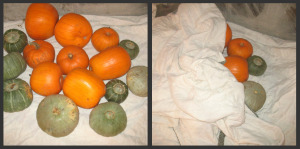
Winter squash needs to be stored in a cool, dry area. After picking the squash, it’s better to let the fruits harden off at temperatures of 50-55°F for a week or so. Then you can lower the temperature by 10°F. I store my Squash and Pumpkins in my garage on a blanket. My garage doesn’t freeze. If your garage freezes, cover the squash with a heavy blanket to prevent them from freezing. If the garage door is open for any length of time, your squashes might freeze. Most of the winter squash will keep all winter. Return to Gardening Vegetables from Growing Winter SquashPumpkin Recipes Storing Fresh Vegetables |






